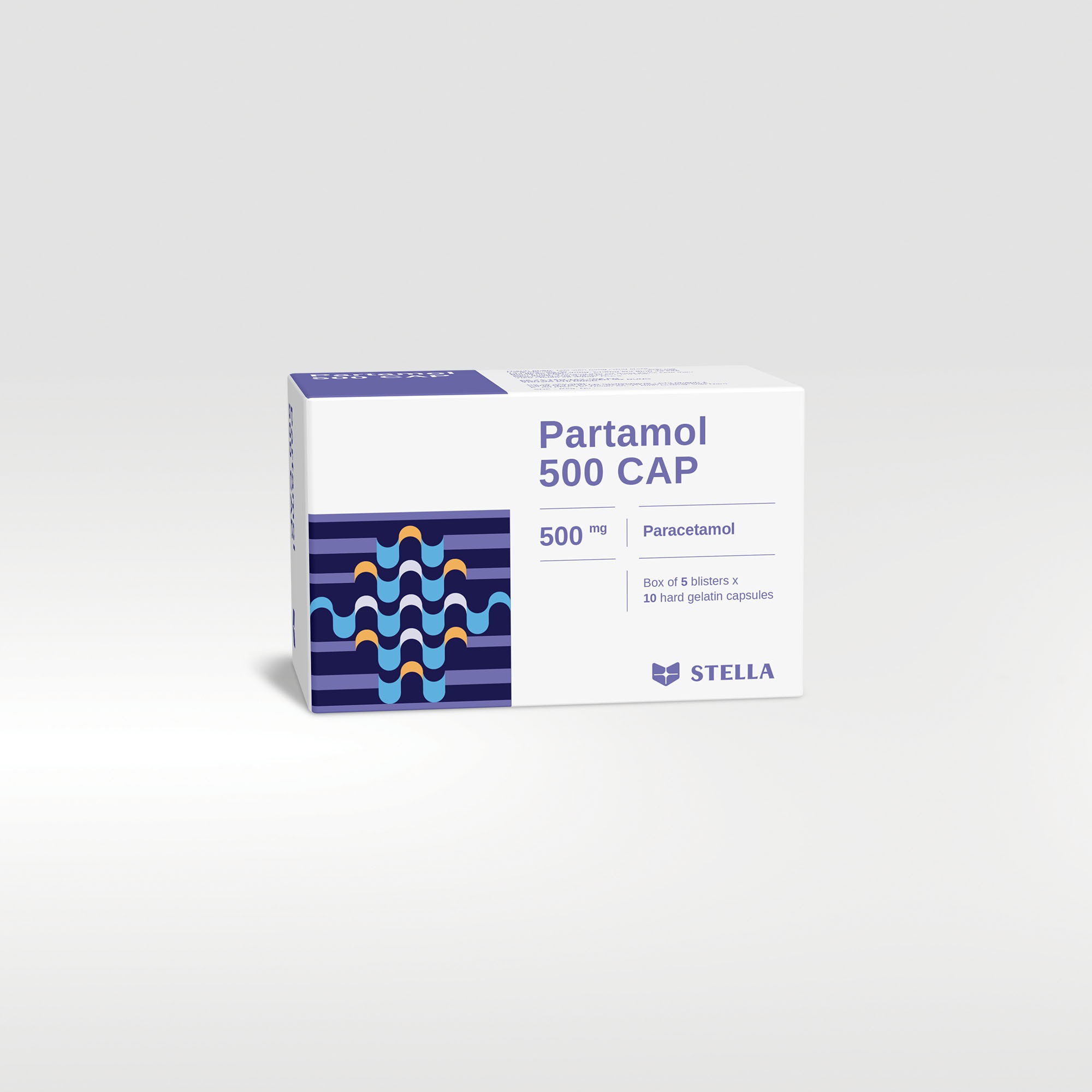Partamol 500 CAP OTC
Paracetamol is often chosen as an analgesic and antipyretic, especially in the elderly and in people with contraindications to salicylates or other NSAIDs, such as those with asthma, history of peptic ulcer, and children.
| Pack size | Box of 50 capsules, 100 capsules |
| Shelf-life | 36 months |
| Composition | Paracetamol |
| Dosage forms and strengths | Hard gelatin capsule: 500 mg |
Product code :















